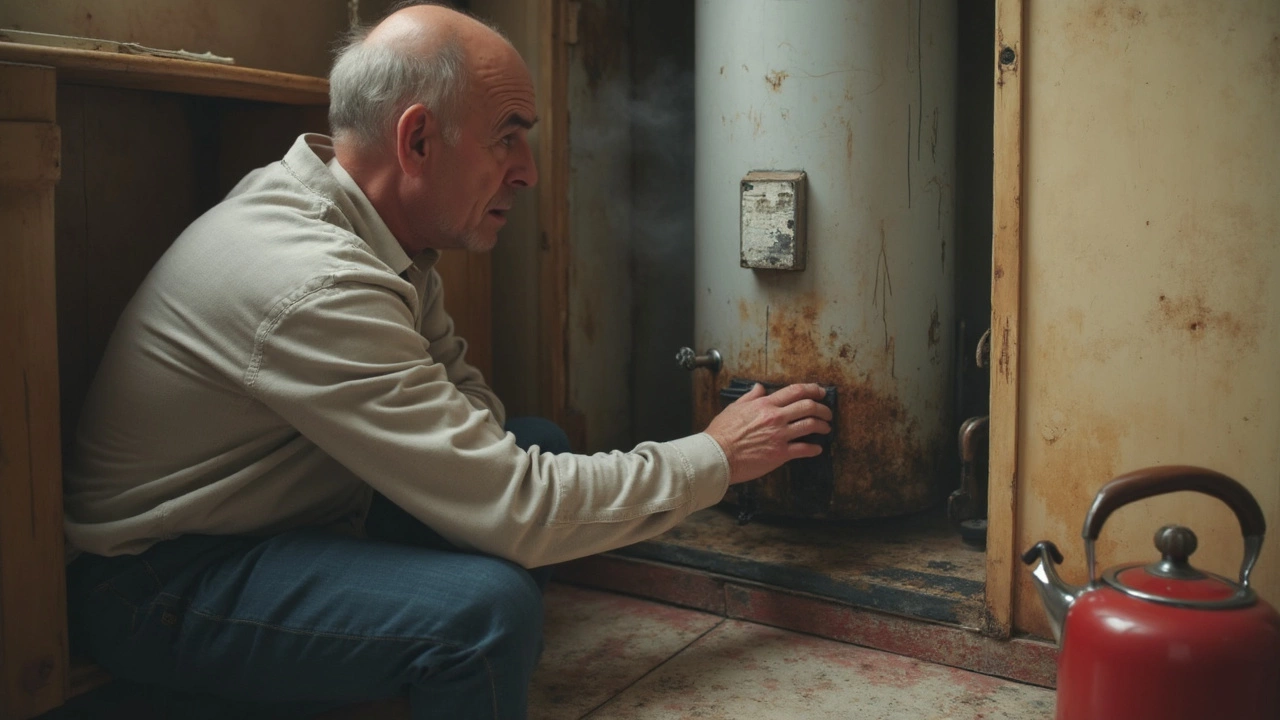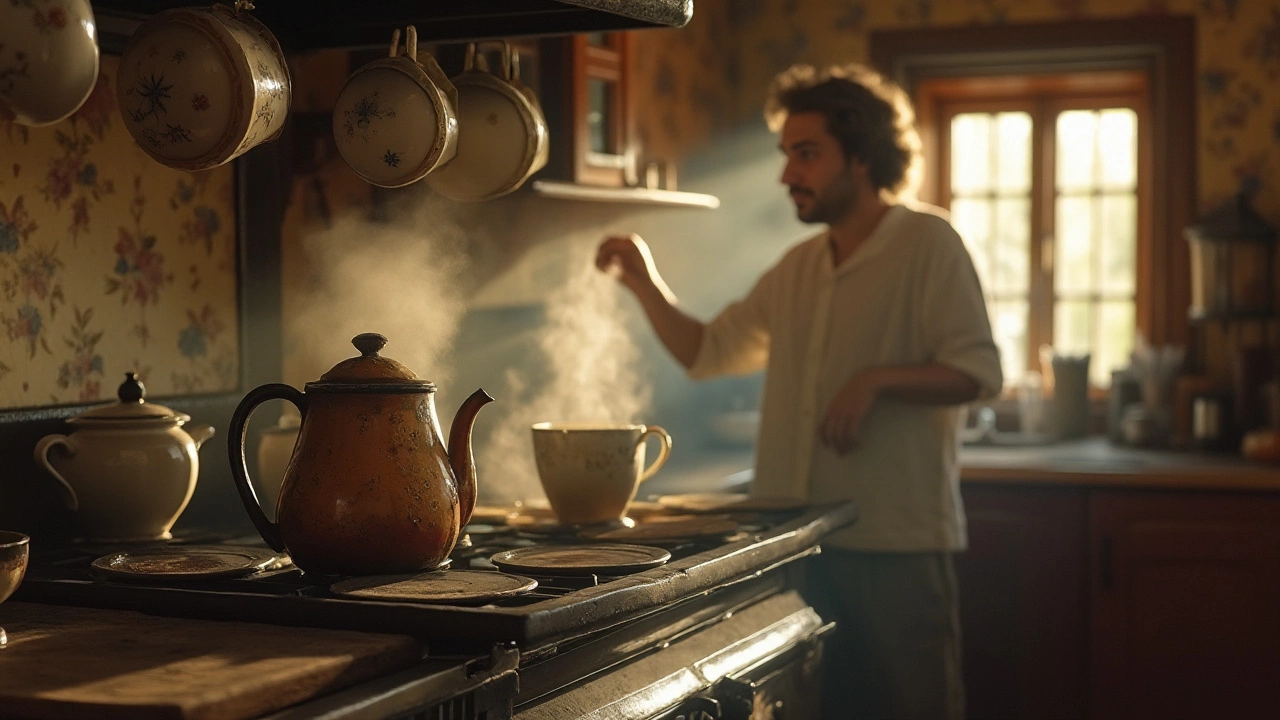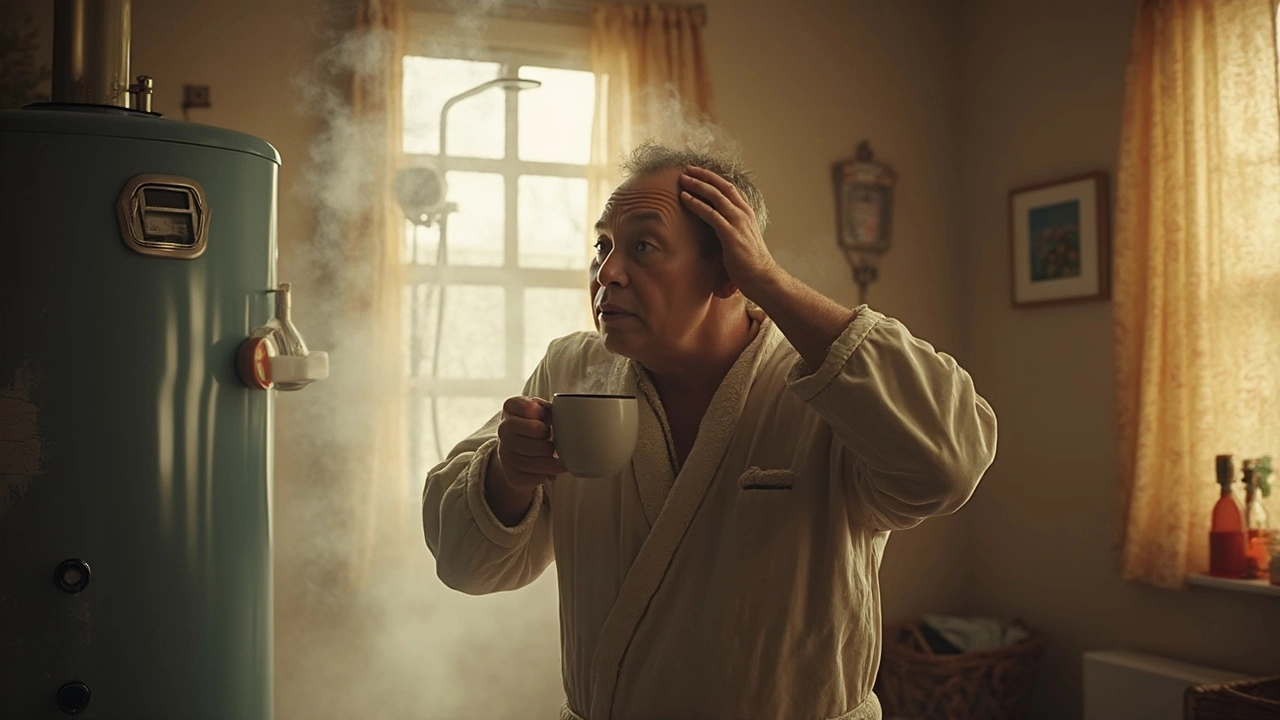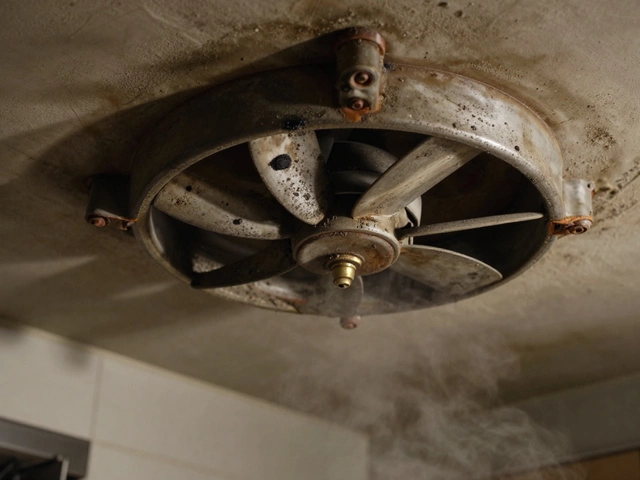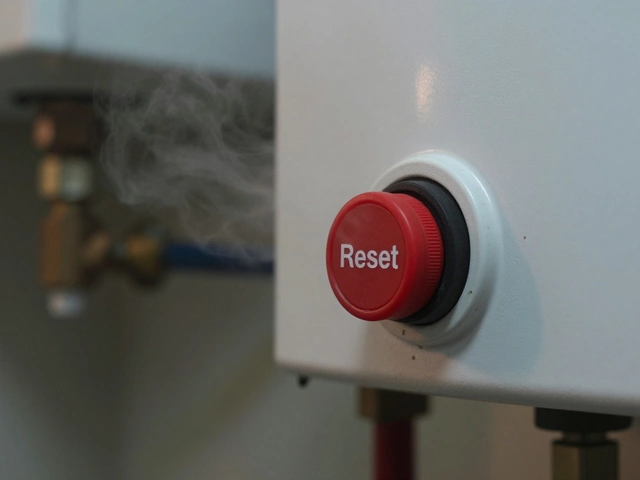You walk into your garage and spot a puddle under your water heater. Is it just condensation, or is this about to wreck your weekend? Most people ignore the early warning signs their water heater gives off—until the day they’re stuck with freezing showers or worse, a flood.
Water heaters aren’t mysterious, but they are stubborn; they almost always give you clues before calling it quits. Know what to look for, and you’ll dodge emergency repairs, messes, and even safety scares. Ever heard your water heater rumble like a freight train or noticed hot water turning a strange rusty color? Those aren’t normal.
If you spot leaks, weird noises, or a whiff of something foul, don’t just shrug it off. These are the real red flags you should pay attention to—because once these issues start, things almost never get better on their own. Let’s break down the classic warning signs, why they matter, and what you can actually do about them.
- Weird Sounds and What They Mean
- Leaks and Drips: The Slippery Slope
- Rust, Murky Water, and Discoloration
- Temperature Trouble and Heating Failures
- Smells, Safety Issues, and What to Do Next
Weird Sounds and What They Mean
If your water heater is making noise, don’t just turn up the TV and hope it goes away. Each weird sound means something different, and listening could save you headaches and cash down the line. Let’s break down the usual suspects and what’s actually going on inside your tank.
- Rumbling or Banging: Most often, this is sediment buildup at the bottom of the tank. When water heats up, it has to bubble through all that gunk, which makes the tank vibrate and rumble. Sediment build-up is the leading cause of early tank failure in the U.S.
- Popping: Just like rumbling, popping usually means there’s hard water scale or minerals caked on the heating element. Water gets trapped under the scale, gets superheated, and lets off a sharp pop.
- Screeching or Whistling: This usually points to a valve not fully opened, or pressure building up somewhere. Sometimes it’s a kinked pipe or tight fitting—fixing this early keeps your tank from overheating or leaking.
- Ticking: Minor, but annoying. Ticking usually comes from heat traps or check valves. Not dangerous, but if it gets louder, get a pro to check it out. Sometimes it means thermal expansion is pushing on the pipes a little too much.
Here’s a quick cheat sheet for water heater sounds and what they mean:
| Sound | Likely Cause | What to Do |
|---|---|---|
| Rumbling/Banging | Sediment buildup | Flush tank, check for leaks |
| Popping | Mineral/scale deposits | Flush tank, consider water softener |
| Screeching | Closed valve or tight pipe | Check valves, open main shutoff |
| Ticking | Heat trap or thermal expansion | Monitor, call pro if it gets worse |
If you have a newer water heater and it’s already popping or rumbling, local water quality is probably to blame. About 85% of American homes have hard water, and sediment fuels most early water heater problems. Don’t ignore it; a quick flush once a year clears out most buildup before it wrecks the tank.
The bottom line: If your water heater sounds like it’s auditioning for a horror movie, schedule a flush or call a tech. Catch it early, and you’ll keep things running smooth—and a lot quieter.
Leaks and Drips: The Slippery Slope
Notice water pooling under your water heater? That’s never a good sign. Even a tiny drip can mean something’s wrong. Most leaks start small, but they almost always get worse, not better.
Drips often come from two places: the tank itself or your water connections. If it’s the tank, you’ve got a bigger problem—a corroded or cracked tank almost always means you’ll need a replacement soon. Leaks from pipes, fittings, or the pressure relief valve might be fixable, but don’t wait around to see if they’ll fix themselves—they won’t.
Here are the most common places to check for leaks:
- Under the tank (look for puddles)
- Pipe joints and fittings (check for wet spots or drips)
- Temperature and pressure relief valve (sometimes it leaks if there’s too much pressure)
If you see rust in the water with the leak, chances are the inside of your tank has started to corrode. A 2024 home maintenance study showed that about 80% of water heater failures are caused by tank leaks, and most of those started with a small drip that was ignored. Don’t let it become a flood in your basement.
| Leak Location | Likely Cause | Fix |
|---|---|---|
| Under the Tank | Tank Corrosion | Usually Requires Replacement |
| Pipe Connections | Loose or Faulty Fitting | Tighten or Replace Fitting |
| Pressure Relief Valve | High Pressure/Failed Valve | Replace Valve or Check Pressure |
If you spot a leak, turn off the power or gas to your water heater and shut off the water. The longer you wait, the riskier and more expensive this gets. Don’t get stuck with a soaked floor and a broken heater the next morning—call a pro before things spiral out of control.

Rust, Murky Water, and Discoloration
If you turn on the hot tap and see rusty or dirty water, your water heater is waving a big red flag. This isn’t just cosmetic—rust usually means the inside of your tank is corroding, and your unit is probably on borrowed time. Most tanks are made from steel and have a glass lining to prevent rust, but once that lining cracks, the steel is exposed and starts corroding from the inside out.
One clear sign of tank corrosion is rust-colored water from any faucet using hot water. If only your cold water is discolored, then the problem might be in your plumbing instead, but if it’s just from the hot side, the water heater is the likely culprit.
Also, look for cloudy water or sediment floating around. Over the years, minerals like calcium and magnesium settle at the bottom of the tank, turning what should be clear water into something that looks more like weak tea. This can clog your pipes, make your showers less enjoyable, and force your heater to work harder than it should. Flushing the tank once a year helps, but if it’s already rusty inside, flushing won’t reverse the damage.
- If you spot rust in your hot water, call a pro fast. The tank might be close to leaking, and waiting could mean a mess and a pricey replacement.
- If the water’s just cloudy but not rusty, try draining a few gallons from the tank. Sometimes a good flush can clear things out and save your heater’s life.
- Check your unit’s anode rod. This part is meant to corrode first and save the tank, but it wears out in 3-5 years. Replacing it before it’s gone is a much cheaper fix than getting a new tank.
Don’t ignore weird water colors. They’re usually a sign that trouble is brewing inside your heater, not just a plumbing quirk. Acting fast can save you money, hassle, and a nasty surprise on laundry day.
Temperature Trouble and Heating Failures
Maybe you’re expecting a nice hot shower, but instead, you get lukewarm water—or worse, it runs cold after a couple of minutes. That’s a classic sign your water heater isn’t working right. When the temperature isn’t what you set, or the hot water runs out way faster than before, don’t just chalk it up to "old house problems." Something’s up, and it usually points to a real issue inside the unit.
Heating elements in electric water heaters are notorious for burning out after several years. If just one fails, you’ll notice lukewarm water or short spurts of heat, instead of a steady supply. With gas models, problems often come from a faulty thermocouple, pilot light issues, or a burner clogged with sediment—but the end result is the same: the water’s not hot enough, or not hot at all.
Here’s what to watch for:
- The water never gets hot, no matter how high the dial goes. This usually means a failed thermostat or broken heating element.
- Hot water runs out much quicker than before. Buildup of sediment in the tank makes it work harder and hold less.
- Water temperature flips from scalding to freezing. That’s not a mood swing—it’s a thermostat problem or possibly a dip tube issue.
If you keep cranking up the temperature but nothing changes, stop. Overheating can actually damage the tank and make the problem worse. Instead, check your breaker if you have an electric heater (sometimes it trips); for a gas heater, make sure the pilot is lit. Otherwise, call a pro. Most repairs aren’t expensive if you catch them early, but once the tank itself is shot, it’s usually game over.
One tip: flush your tank once a year to clear out sediment. This small habit can help keep your heater running right and extend its lifespan.

Smells, Safety Issues, and What to Do Next
If you ever catch a whiff of rotten eggs or sulfur near your water heater, that’s a big red flag. Most of the time, that smell means bacteria are reacting with the anode rod inside your tank, releasing hydrogen sulfide gas. It’s gross and unmistakable. Sometimes you can fix it by flushing the tank and replacing the anode rod, but if that doesn’t work, you might need a pro.
On the other hand, a burning or metallic smell is bad news too. It could mean wiring overheating or burning insulation, which is a huge safety problem. Unplug electric water heaters right away if you smell burning, and do not turn them back on until a licensed tech checks them out.
Gas-powered water heaters come with their own set of worries. If you smell gas—even faintly—don’t mess around. Get everyone outside, leave the house, and call your utility company or 911. Gas leaks aren’t something you can fix on your own, and ignoring them can lead to explosions.
While smells are important red flags, don’t forget about the safety features you should check regularly:
- Test the temperature and pressure relief (TPR) valve at least once a year—this little guy is what keeps your tank from turning into a rocket if pressure builds up.
- Look for scorch marks around gas heaters or the vent piping; visible damage can mean dangerous combustion issues.
- If you notice frequent pilot light outages or see soot collecting, it’s time to get your water heater serviced.
So what should you do next if you spot—or smell—a problem? Here’s how to handle it:
- Don’t ignore it. Small issues with your water heater will not fix themselves, and ignoring warning signs makes repairs more expensive.
- Turn off power to electric units or shut off the gas supply if you feel unsafe. Your safety comes first.
- Call a qualified plumber or HVAC technician for anything beyond basic troubleshooting. Today’s water heaters have a lot of safety features, but once they go bad, you need someone who knows what they’re doing.
Bottom line: If something smells off or makes you worry about your safety, take it seriously. Get it checked out before things get out of hand and the damage (or danger) grows.
